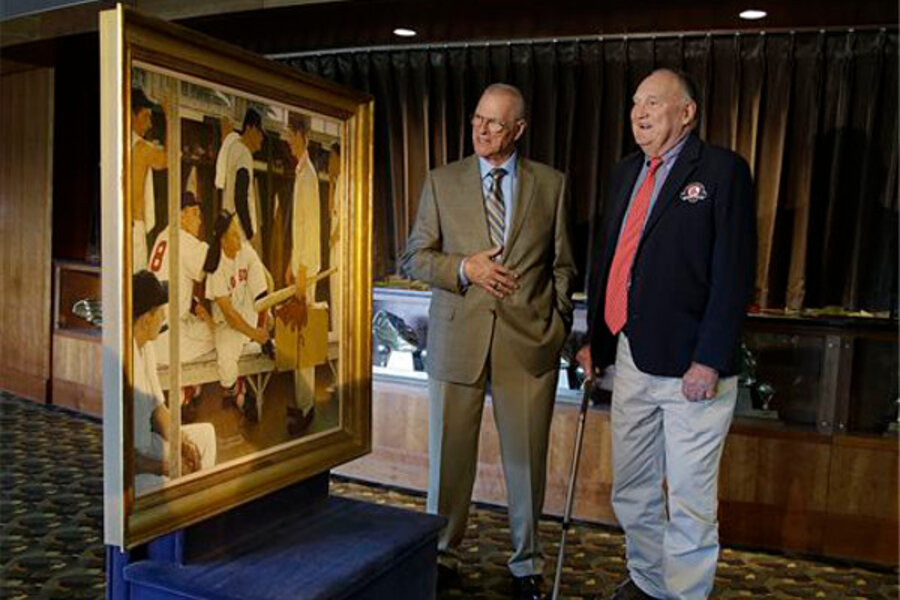Rockwell painting displayed at Fenway is expected to draw $20-30 million
Loading...
| BOSTON
A Norman Rockwell painting of Boston Red Sox players that is estimated to sell for up to $30 million this month was shown off at Fenway Park Monday with two of the men depicted in the work on hand to reminisce about its creation.
The painting, "The Rookie (Red Sox Locker Room)," appeared on the cover of the March 2, 1957, issue of the Saturday Evening Post. Christie's in New York is offering it May 22 with a pre-sale estimate of $20 million to $30 million.
The painting shows Hall of Famer Ted Williams, pitcher Frank Sullivan, right fielder Jackie Jensen, catcher Sammy White, and second baseman Billy Goodman. The seasoned, confident players are seen facing an awkward newcomer arriving in the locker room for spring training — dressed in a crumpled suit and a battered bowler hat while also clutching a suitcase, baseball bat and gloves.
On Monday, Sullivan and Rockwell's model for the rookie — Sherman Safford — got to see the painting at Fenway.
Sullivan said he and some of his teammates didn't know who Rockwell was when they were asked to pose for him in Stockbridge.
"We were just ball players," he said. "We were just doing what we were told to do — and then to have it go like it has and become something of value as they claim it's gonna be, it's just unbelievable."
Safford was a high school athlete from the western Massachusetts town of Pittsfield when he was asked to model for Rockwell. Safford says he was actually a better at basketball and didn't make the high school baseball team.
"Thanks to Mr. Rockwell, however, I got into the Hall of Fame before my heroes did — it was in the library, but that cover was there. It was awesome," he said.
Williams, nearing the end of his career, was the only player who did not pose in Rockwell's hometown of Stockbridge. The artist had to rely on baseball cards and photographs for the details of his face.
The anonymous owner acquired it in 1986, and it has remained in the same private collection since then.
The painting was exhibited for six days at the Museum of Fine Arts in Boston until Sunday. It was previously on display there in 2005 and 2008, following World Series victories by the Red Sox.
In December, Rockwell's 1951 "Saying Grace" sold at Sotheby's for $46 million. It set an action record for the artist.
Associated Press Writer Rodrique Ngowi can be reached at www.twitter.com/ngowi
Copyright 2014 The Associated Press. All rights reserved. This material may not be published, broadcast, rewritten or redistributed.





